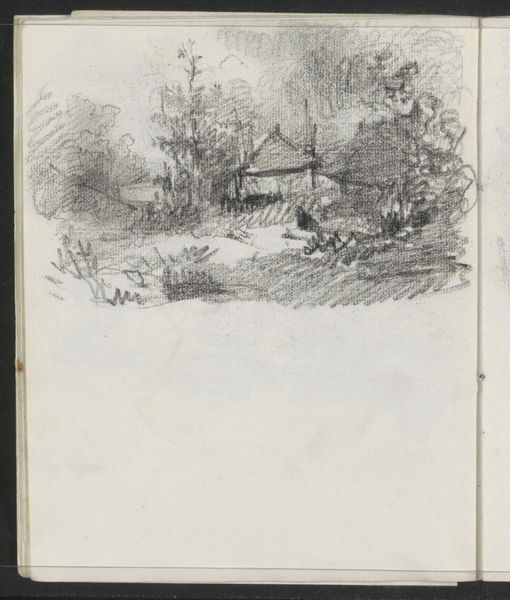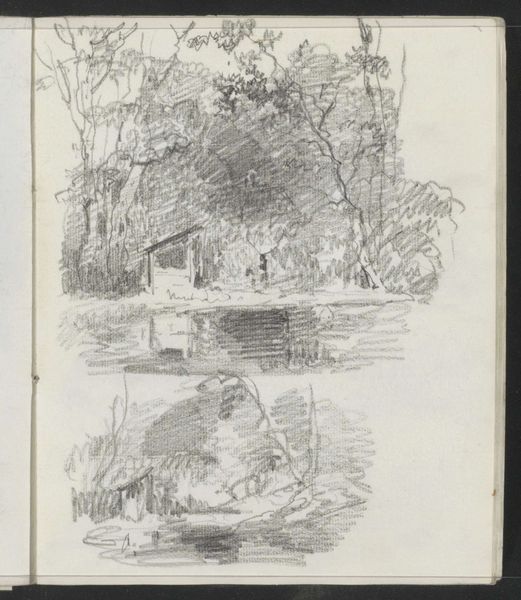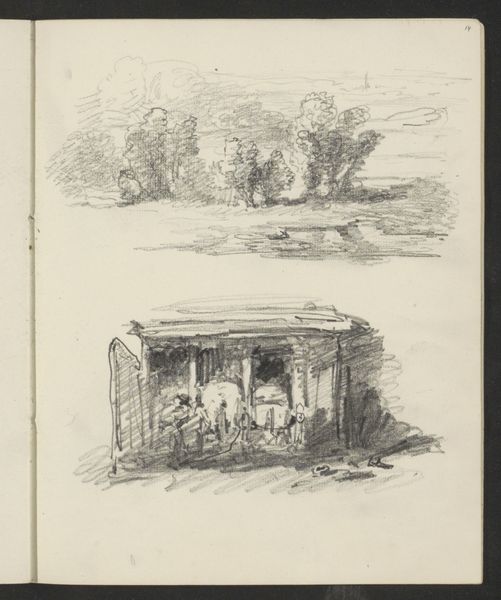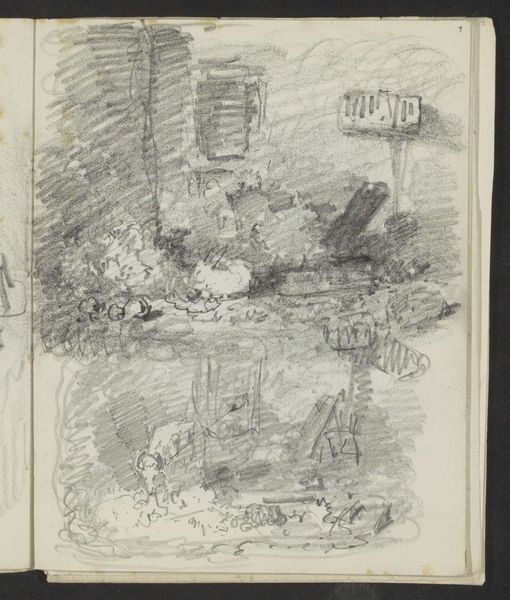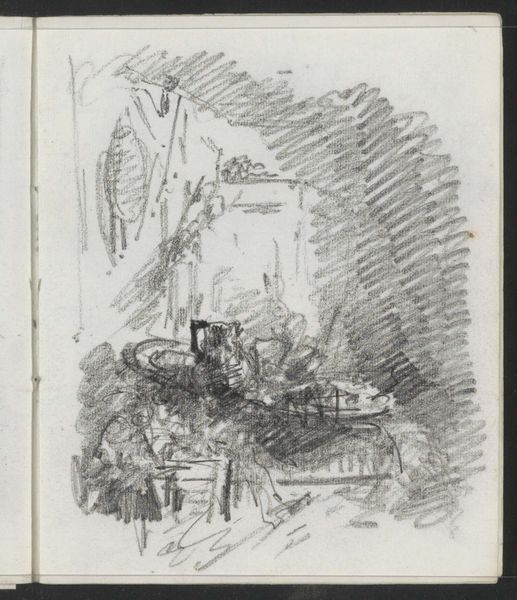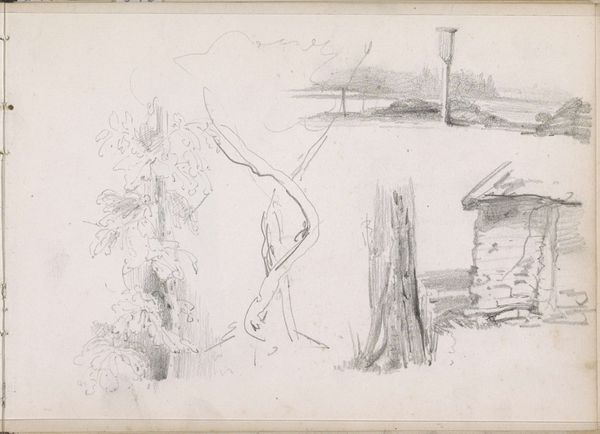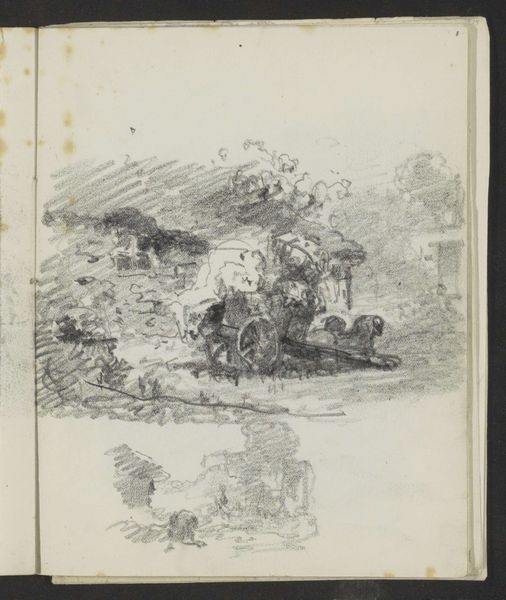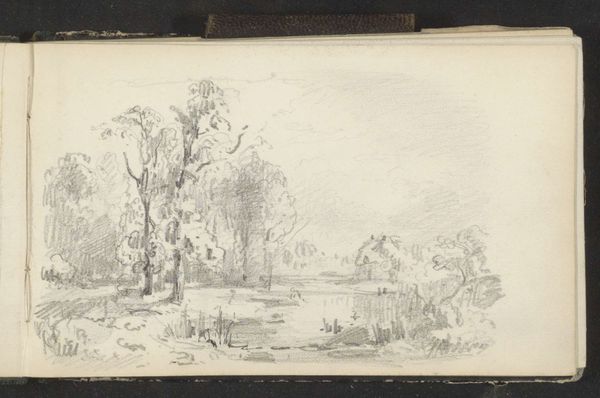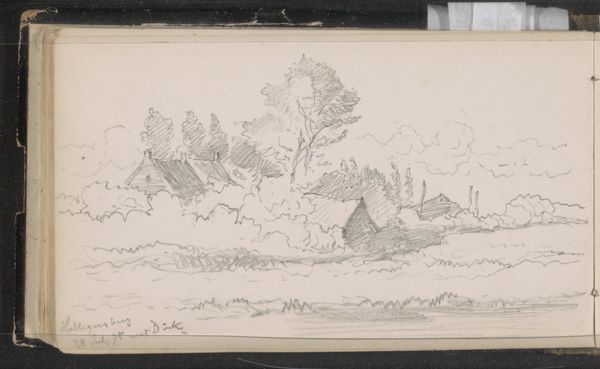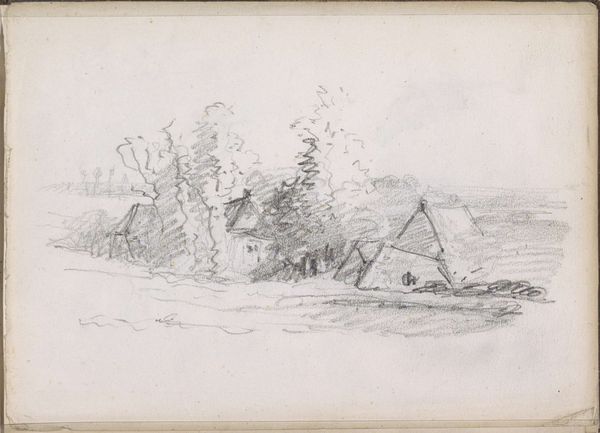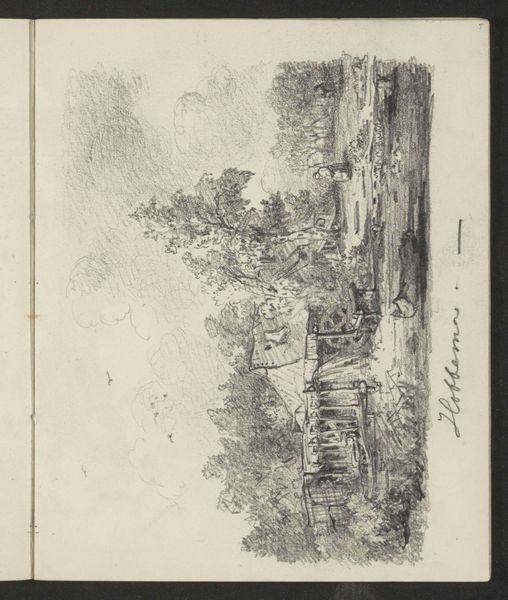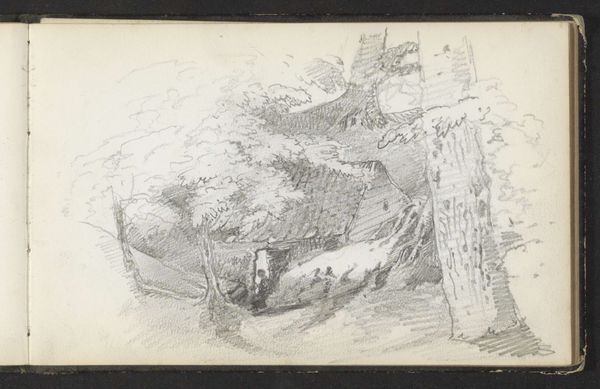
Landschap met water, landschap met figuren en bebouwing en stillevens 1834 - 1906
0:00
0:00
drawing, pencil
#
drawing
#
sketch book
#
landscape
#
figuration
#
pencil
Copyright: Rijks Museum: Open Domain
Editor: So, this drawing is by Maria Vos, made between 1834 and 1906. It's called "Landschap met water, landschap met figuren en bebouwing en stillevens"—Landscape with water, landscape with figures and buildings and still lifes, and it's pencil on paper. It’s a sketchbook page with different scenes. It feels really immediate, like we're seeing the artist’s process. What strikes you most about this piece? Curator: What I find fascinating is the accessibility it gives us to the artistic training and practice of the 19th century. Sketchbooks weren't always viewed as display-worthy art objects; they were primarily tools. Vos’s sketches offer glimpses into how artists documented their surroundings, honed their skills, and explored compositional ideas. The act of drawing was tied to academic training and artistic development. Does seeing this work change how you perceive finished landscape paintings from that period? Editor: Definitely. Seeing these raw sketches makes the finished paintings feel…more constructed, less about pure observation. This feels closer to her unfiltered perspective. I'm curious though, how did the institutional acceptance of women artists evolve during Vos’s lifetime? Did sketchbooks play a role in shifting perceptions? Curator: Precisely! In Vos’s time, art institutions, like academies and exhibition spaces, were gradually opening up to women. Sketchbooks like this, although not initially intended for public display, can reveal the dedication and skill women artists possessed. They subtly challenged existing notions about women's artistic capabilities, providing visual evidence of their serious engagement with the art world. Museums later collected such sketchbooks which brought with it a sense of legitimacy. Are you left with an enhanced appreciation? Editor: Absolutely. Thinking about this drawing within the context of institutional history gives me a whole new appreciation for Vos’s work. Curator: And I feel like seeing your fresh perspective reminds us that we should never take these spaces and histories for granted.
Comments
No comments
Be the first to comment and join the conversation on the ultimate creative platform.
